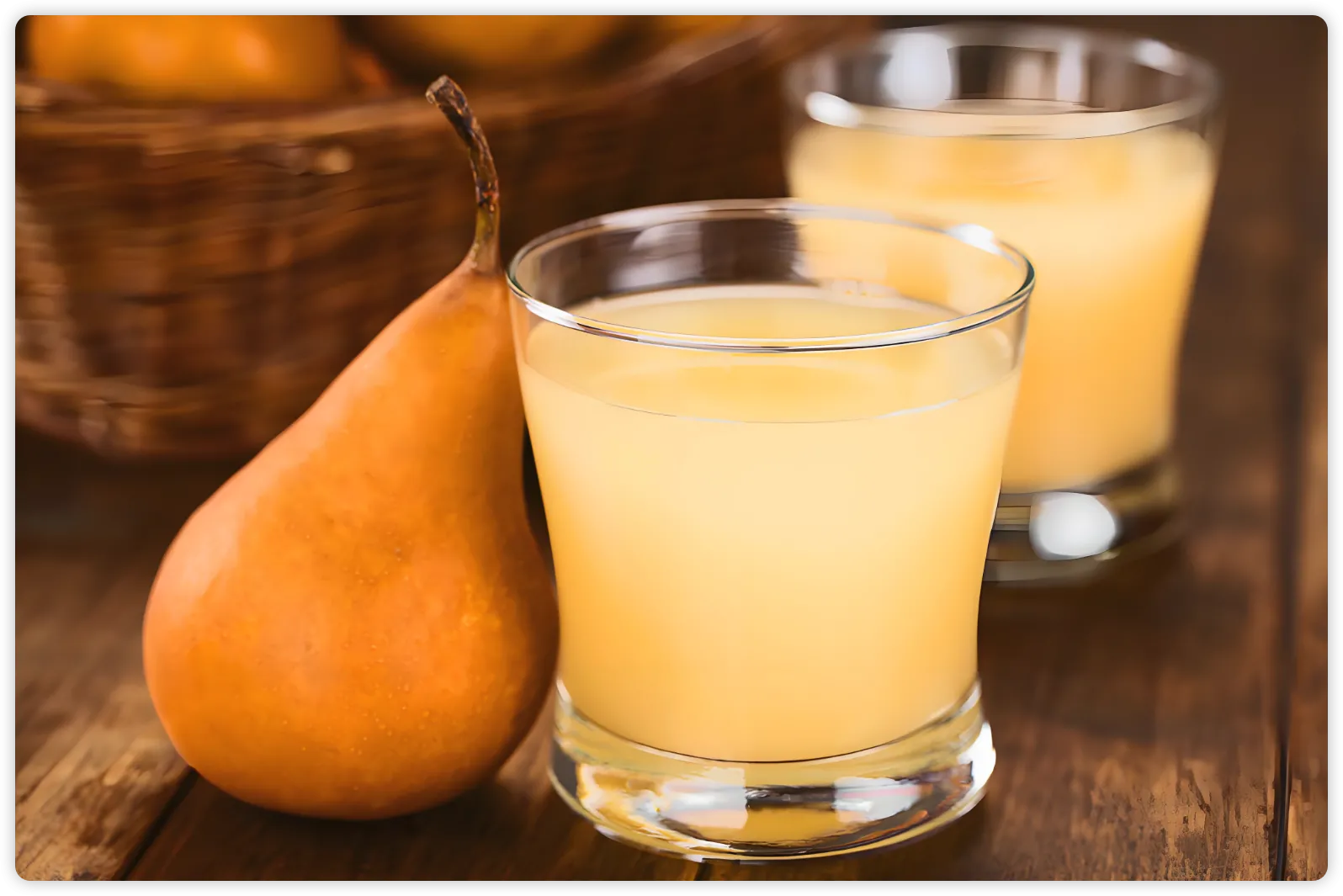In the process of juice production and processing, “pear pulp” and “concentrated pear juice” are often mentioned. They have certain differences in appearance, taste, production process and use. Understanding the differences between the two can help consumers and producers make better choices, especially in the juice, beverage, food and baking industries. This article will analyze in detail the main differences between pear pulp and concentrated pear juice to better understand their application scenarios.
- What is pear pulp?
Pear pulp usually refers to a thick juice-like liquid obtained by squeezing or other mechanical treatment of fresh pears. Pear pulp is not concentrated, and it usually retains a more natural flavor, color and nutrients. Pear pulp contains pear fiber, pulp and some water, and is the pure part of the fruit that has not been dehydrated or concentrated.
Production process: Pear pulp is obtained by crushing, squeezing and filtering fresh pear pulp. This process usually retains the natural texture and high water content of the pulp.
Features: Pear pulp retains more natural fruit fiber and nutrients, has a richer taste, and is richer in natural ingredients.
Uses: Pear pulp is often used in the production of foods such as juice, jam, ice cream, and jelly. It is a basic product in the processing process and is particularly suitable for products that need to retain the texture of the pulp.
- What is concentrated pear juice?
Concentrated pear juice is a concentrated liquid obtained by removing part of the water from pear juice through heat treatment or low-temperature evaporation. The purpose of this process is to increase the concentration and shelf life of the juice. By removing water, the volume of concentrated pear juice is greatly reduced, making it easier to store and transport.
Production process: The production process of concentrated pear juice includes first extracting fresh pear juice by squeezing, then using heating or vacuum low-temperature evaporation technology to remove water, and finally obtaining concentrated juice.
Features: Concentrated pear juice is thicker and has a more concentrated taste than pear pulp, but due to the removal of water, it is often necessary to re-add water to achieve the drinking taste required by consumers.
Uses: Concentrated pear juice is usually used for large-scale production and commercial applications, such as bottled pear juice, beverage base, flavoring agent, and sweetener in food processing.
- The main differences between pear pulp and concentrated pear juice
1) Different production processes
Pear pulp: obtained by squeezing and filtering, retaining the natural pulp and moisture.
Concentrated pear juice: After dehydration process (such as evaporation, freeze concentration, etc.), the water content is greatly reduced, the volume is reduced, and it is easy to store.
2) Water content
Pear pulp: contains more water, so its taste is closer to fresh juice, and the pulp is stronger.
Concentrated pear juice: after concentration, the water content is greatly reduced, the taste is stronger, and it needs to be diluted with water before use.
3) Taste and texture
Pear pulp: The texture is thicker, the taste is more natural, and it has certain pulp particles.
Concentrated pear juice: The taste is stronger, but due to the removal of water, the juice is purer and more concentrated.
4) Nutritional content
Pear pulp: It retains more pulp and fiber, has higher nutritional value, and is rich in vitamins, minerals and natural sugars.
Concentrated pear juice: Due to the dehydration process, some nutrients may be lost during the concentration process, but modern technology can retain relatively rich nutrients through restoration.
5) Shelf life
Pear pulp: Due to the high water content, the shelf life is short and needs to be refrigerated.
Concentrated pear juice: Due to the removal of water, concentrated pear juice has a longer shelf life and is easy to transport and store.
- Which one is more suitable for your needs?
For drinking juice: If you prefer a fresh taste and like drinks with a pulpy texture, pear pulp is a more suitable choice.
For food processing or large-scale production: If you need to produce juice in large quantities or use juice as a food ingredient, concentrated pear juice is more suitable for large-scale production and processing due to its long shelf life and easy transportation.
- Market prospects of pear pulp and concentrated pear juice
As consumers’ demand for natural and healthy foods increases, pear pulp and concentrated pear juice have a wide range of market applications in the fields of fruit juice drinks, food processing, and healthy snacks. Whether for household consumption or industrial applications, understanding the difference between the two will help select the right raw materials for the product and improve the quality and competitiveness of the product.
